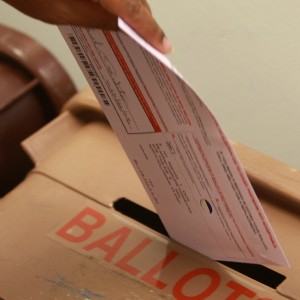First, how do you measure the impact? If you look at voter turnout (predicted to be higher by supporters), the results are not encouraging. An analysis by Eric McGhee with the Public Policy Institute of California found that turnout was not higher overall in 2012, but it did seem to encourage "independent" voters to participate in the primary that year more than they had in the past. But it's always hard to compare one election to another. It depends on variables such as:
- Is there an exciting race at the top of the ticket to draw voters?
- Is an incumbent running for re-election or, like this year, is the incumbent an apparent shoo-in?
- What else is on the ballot -- like controversial turnout-driving initiatives?
That last point is worth noting, because this is the first year in decades that a primary ballot has no citizen initiatives at all. In fact, unless something changes, all citizen initiatives will now be on the November ballot due to legislation quietly enacted by the Democratic-controlled legislature and Gov. Jerry Brown three years ago.
The measure signed by Gov. Brown ensures that ballot propositions will be decided in higher turnout elections with more liberal electorates. But it also has the unintended consequence of probably driving down turnout for primary elections, perhaps by as much as seven percentage points. In fact, some prognosticators are saying this election could break a record for lowest turnout in a California primary.
Intra-Party Impacts
Perhaps the biggest impact the Top Two system is having is in intra-party challenges. In 2012, Dublin City Councilman Eric Swalwell bucked party leaders to challenge entrenched Democratic incumbent Pete Stark in the 15th CD east of San Francisco. Swalwell finished second to Stark in the primary, and under the old system that would have been it for him. But under Top Two he went on to November where he beat the 40-year incumbent 52-48. (He's now facing his own party challenge from State Senator Ellen Corbett, who claims Swalwell is too inexperienced and too conservative for the district.)
A similar dynamic -- without the outcome far from certain -- is underway in the Silicon Valley, where incumbent Democrat Mike Honda is facing a stiff challenge from upstart Democrat Ro Khanna, a darling of high-tech leaders like Yahoo CEO Marissa Meyer and Facebook COO Sheryl Sandberg. Voters could be left with an all-Democrat choice of Honda vs. Khanna in November, or Republican Dr. Vanila Singh could consolidate Republican votes and enough non-partisan voters to make the November finals, while Honda and Khanna duke it for the other spot.
The same kind of calculation is underway in other legislative and congressional districts throughout California where the "jungle primary" is scrambling conventional wisdom.
Meanwhile in the wide-open race for Secretary of State, Dan Schnur, the first non-partisan candidate in a statewide race under Top Two, is facing candidates including Democratic State Senator Alex Padilla and Republican Pete Peterson. Schnur, a former GOP operative turned USC academic, was a big proponent of the Top Two primary, predicting it would give independent candidates and voters a bigger role in California politics. Pre-election polls do not bear that out, with Schnur trailing far behind other candidates.
But perhaps the biggest losers of all under Top Two are "third parties" like the Green, Peace and Freedom and American Independent parties. The chance for one of their candidates coming in second and making it to the November ballot is slim to none.
The June primary will provide additional data on questions how the Top Two system is affecting California elections and politics. But one thing seems clear: It's not a panacea for all that ails our electoral system.
